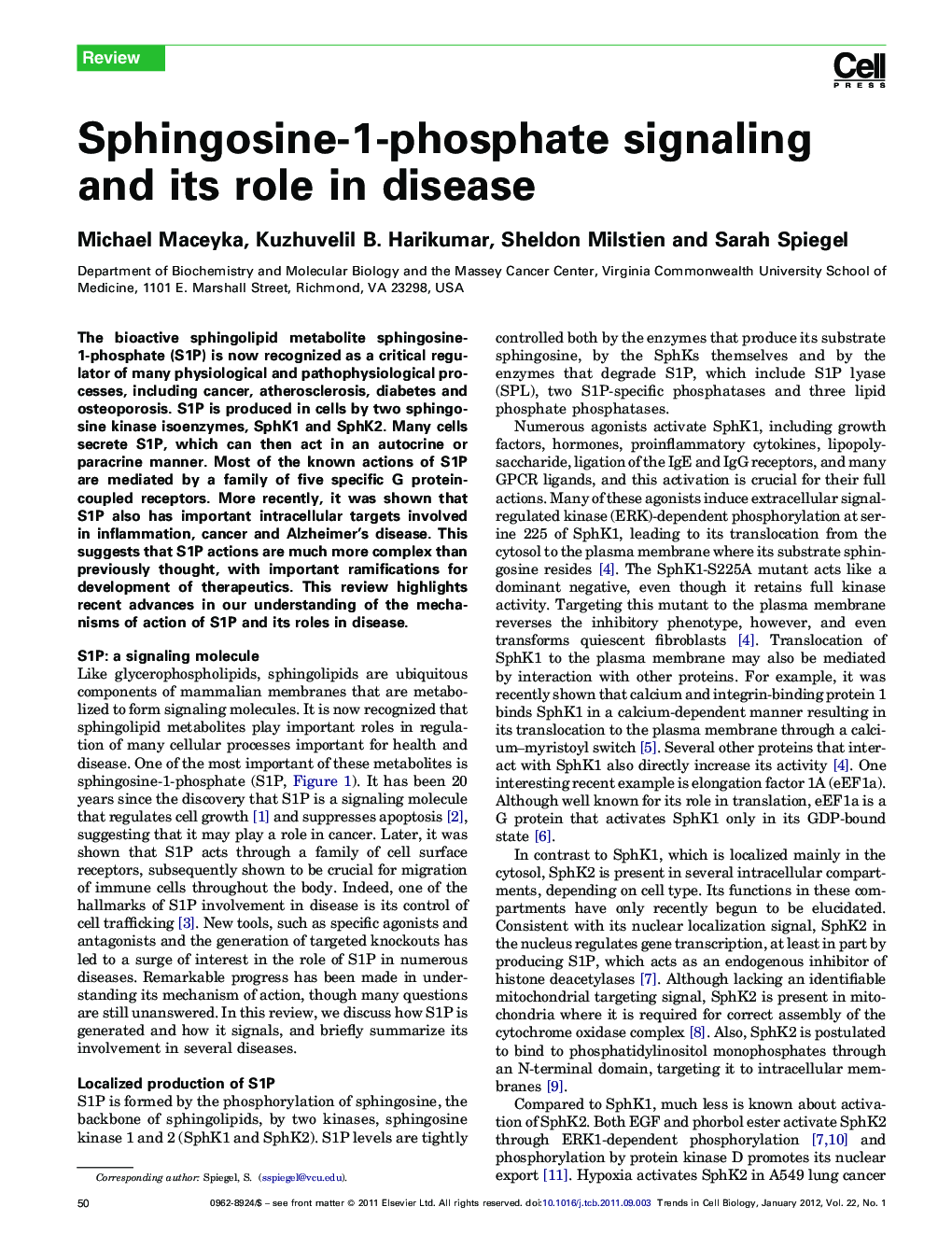| Article ID | Journal | Published Year | Pages | File Type |
|---|---|---|---|---|
| 2204617 | Trends in Cell Biology | 2012 | 11 Pages |
The bioactive sphingolipid metabolite sphingosine-1-phosphate (S1P) is now recognized as a critical regulator of many physiological and pathophysiological processes, including cancer, atherosclerosis, diabetes and osteoporosis. S1P is produced in cells by two sphingosine kinase isoenzymes, SphK1 and SphK2. Many cells secrete S1P, which can then act in an autocrine or paracrine manner. Most of the known actions of S1P are mediated by a family of five specific G protein-coupled receptors. More recently, it was shown that S1P also has important intracellular targets involved in inflammation, cancer and Alzheimer's disease. This suggests that S1P actions are much more complex than previously thought, with important ramifications for development of therapeutics. This review highlights recent advances in our understanding of the mechanisms of action of S1P and its roles in disease.
